After Randy Weaver was caught illegally selling weapons in 1992, federal agents planned to arrest him at his home in Ruby Ridge, Idaho. But he had no intention of going quietly.
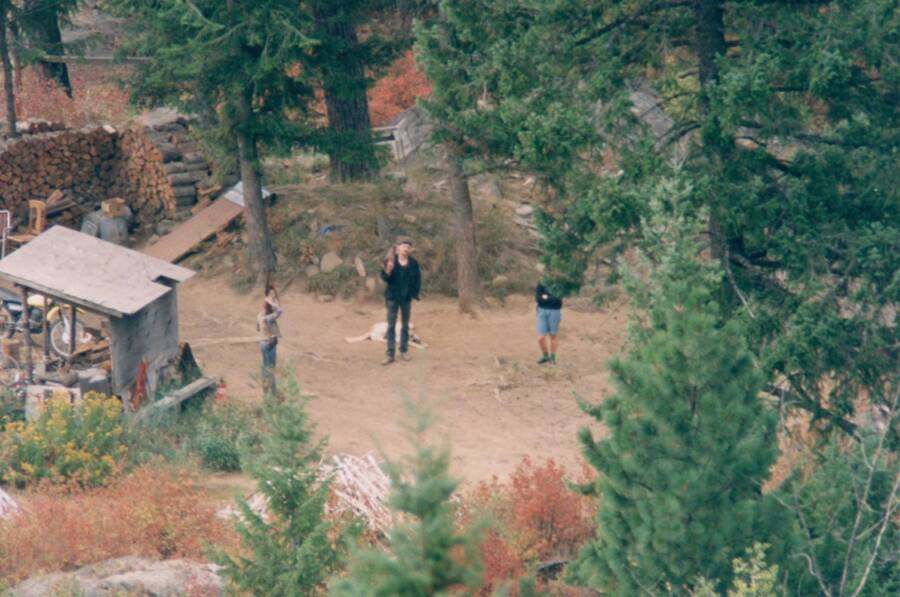
Public DomainFrom left to right: Sara Weaver, Kevin Harris, and Sammy Weaver just before the Ruby Ridge incident of 1992.
A teen boy’s voice pierced through the quiet Idaho woods: “You shot Striker, you son of a bitch!” Gunshots soon echoed through the trees. And when the smoke cleared, three living beings were dead: Striker the dog, 14-year-old Sammy Weaver, and Deputy U.S. Marshal William Degan. With that, the infamous Ruby Ridge incident of August 1992 began.
The seeds of the standoff between the Weaver family and federal agents had begun a few years earlier when Randy Weaver, Sammy’s father, was arrested for illegally selling two sawed-off shotguns to an undercover ATF informant. After a miscommunication about court dates, Randy never showed up to his trial. And so federal agents soon descended on his tiny Idaho cabin atop Ruby Ridge, where Randy and his wife Vicki lived with their children.
The aftermath would claim the lives of not only Striker, Sammy Weaver, and William Degan, but also Vicki Weaver. And it would cement the Ruby Ridge incident into the larger legacy of anti-government movements in the U.S.
The Troubling Road To The Ruby Ridge Incident
When Randy and Vicki Weaver traded the flat plains of their home state of Iowa for the hills and forests of Idaho in 1983, they had several reasons for doing so. The deeply religious Weavers wanted to homeschool their children (which was illegal in Iowa) to protect them from “secular humanism.” And Randy and Vicki had come to believe in movements that warned against government overreach and encouraged armed resistance.
They also believed that the world would soon end.
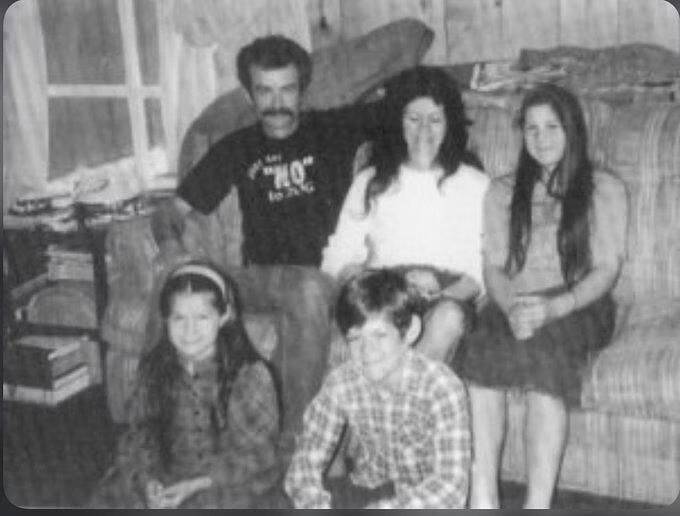
University of MississippiThe Weaver family in 1989, before the Ruby Ridge incident. Randy Weaver is wearing an antisemitic shirt that reads: “Just Say No to ZOG” (“Zionist Occupied Government” or “Zionist Organized Government”).
Having studied sermons by Jerry Falwell, and read books like Hal Lindsey’s The Late Great Planet Earth — which suggested that the rapture could take place as early as the 1980s — the Weavers decided to take fate into their own hands. PBS reports that Vicki Weaver started having visions in the bathtub in which God told her to take her family to the West.
According to reporting from The Washington Post in 1995, Randy believed that “the Scriptures” guided his family to Ruby Ridge, an isolated 20-acre property just south of the Canadian border. The family — Randy, Vicki, their children Sara, Samuel (Sammy), and Rachel, and a young man named Kevin Harris who they’d taken in as a teenager — lived in a small, two-story cabin.
Away from society, they followed religious credos that Vicki enforced. The entrance to their property was marked by a large sign, which read: “Every Knee Shall Bow To Yashua Messiah” (some believe that Yashua or Yeshua was Jesus’ real name) and Vicki forbade the family from eating “unclean” food.
She and her eldest daughter Sara also lived apart from the men of the house — in a small shed nearby — whenever they were on their periods.
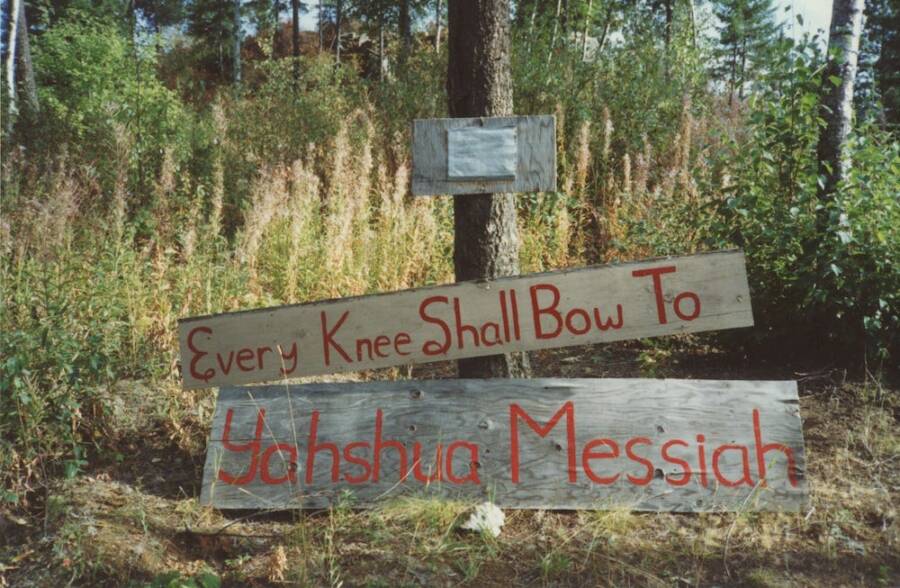
Public DomainThe sign marking the entrance to the Weavers’ property.
Tucked away on Ruby Ridge, the Weavers mostly kept to themselves. But in the late 1980s, Randy Weaver attracted the attention of the government.
Randy Weaver’s Clashes With The Law
Randy and Vicki Weaver infamously saw themselves as white “separatists.” Because of this, Randy attended the annual Aryan Nations Congress in Idaho a number of times, which is where he met a Bureau of Alcohol, Tobacco and Firearms (ATF) informant named Kenneth Fadeley in 1986.
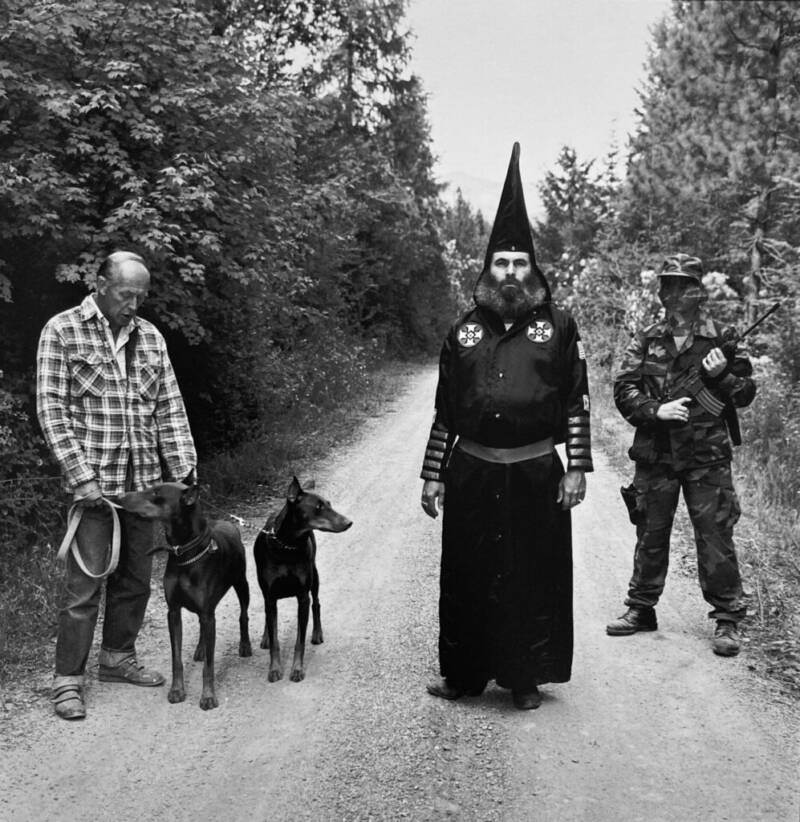
Mary Ellen Mark/Jewish MuseumA Grand Wizard at the Aryan Nations Congress in Hayden Lake, Idaho. This photo was taken in 1986, the first year that Randy Weaver attended the gathering.
At the time, the federal government was actively looking for ways to infiltrate white supremacist groups. So when Weaver told Fadeley in 1989 that he knew the head of an Aryan Nations splinter group based in Montana, he got Fadeley’s attention. Weaver also told him that he was hard-up for cash and — believing that Fadeley was a weapons dealer — offered his assistance.
Hoping to pressure Weaver into becoming an informant, Fadeley asked Weaver to procure two sawed-off shotguns, which Weaver sold to Fadeley for $300. Months later, in June 1990, an ATF agent confronted Weaver and implied that he could avoid prosecution if he helped with an investigation.
But Randy Weaver refused to be a “snitch.”
He was later arraigned in January 1991, and he was told to return to court for his trial. But due to a court official’s error, Randy Weaver was told that his trial date would be in March. It actually took place in February.
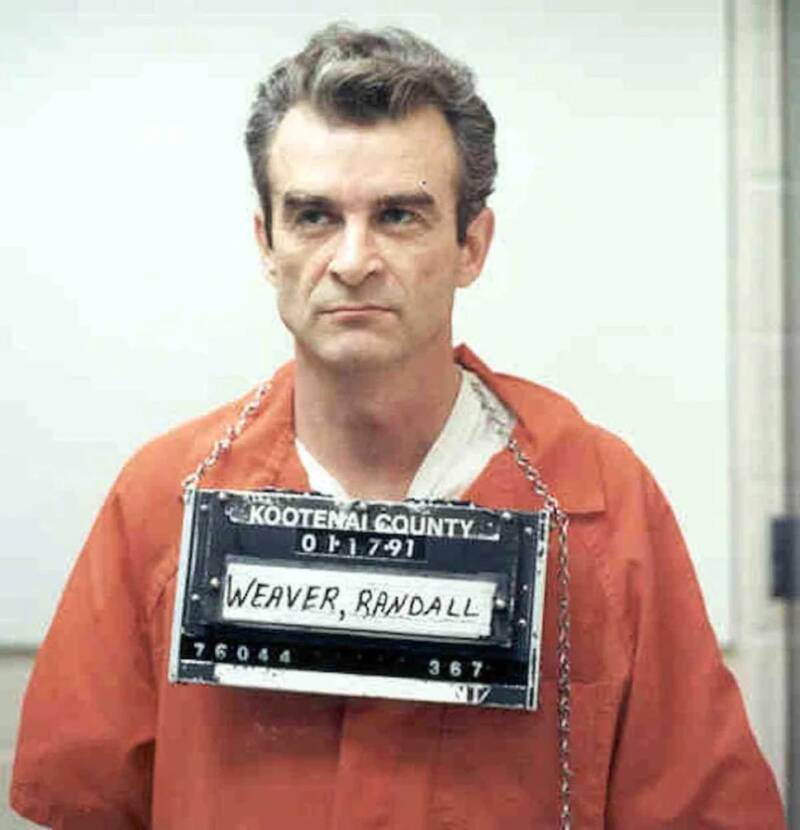
Kootenai County Sheriff’s OfficeRandy Weaver was erroneously told the wrong trial date — and that he might lose his home if he lost his case.
Though it’s possible that Weaver would not have showed up either way, his failure to attend his trial resulted in a warrant for his arrest.
The Ruby Ridge Incident Begins
For over a year, federal agents puzzled over the best way to arrest Randy Weaver. The situation was made complicated by the presence of children on Ruby Ridge, the 14 guns that the family owned, and the agents’ certainty that Randy and Vicki Weaver would violently resist arrest.
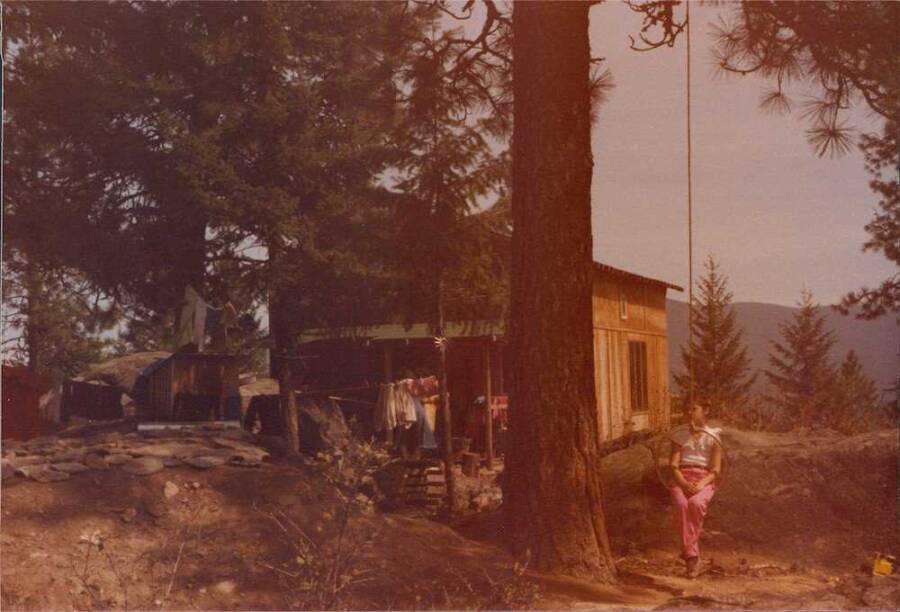
Sara WeaverSara Weaver on a swing outside the Weaver cabin on Ruby Ridge. She was 16 at the time of the siege.
Vicki had written a number of inflammatory letters after the ATF had first confronted her husband in June 1990. In one letter, she wrote: “We cannot make deals with the enemy.” In another, Vicki warned: “Whether we live or whether we die, we will not bow to your evil commandments.” And the entire family signed a letter that stated that they would not leave their “mountain.”
So the ATF watched and waited. By August 1992, the agents had conducted some two dozen surveillance missions of the Weaver family (which had expanded with the birth of baby Elisheba in October 1991). Meanwhile, even the Weaver children could sense that something was different. They’d stayed on Ruby Ridge for 18 months, helicopters hovered overhead, and PBS reports that one day, Harris and Sammy stumbled upon a camera in the woods.
Then, in late August, the federal agents decided to conduct a final reconnaissance mission at Ruby Ridge before finally arresting Randy Weaver.
On the morning of August 21st, Deputy U.S. Marshal William F. Degan, Deputy U.S. Marshal Larry Cooper, and Deputy U.S. Marshal Arthur Roderick set out for Ruby Ridge. At around 10:15 a.m., they drew so close to the Weavers’ cabin that they drew the attention of the family’s dogs, who started to bark.
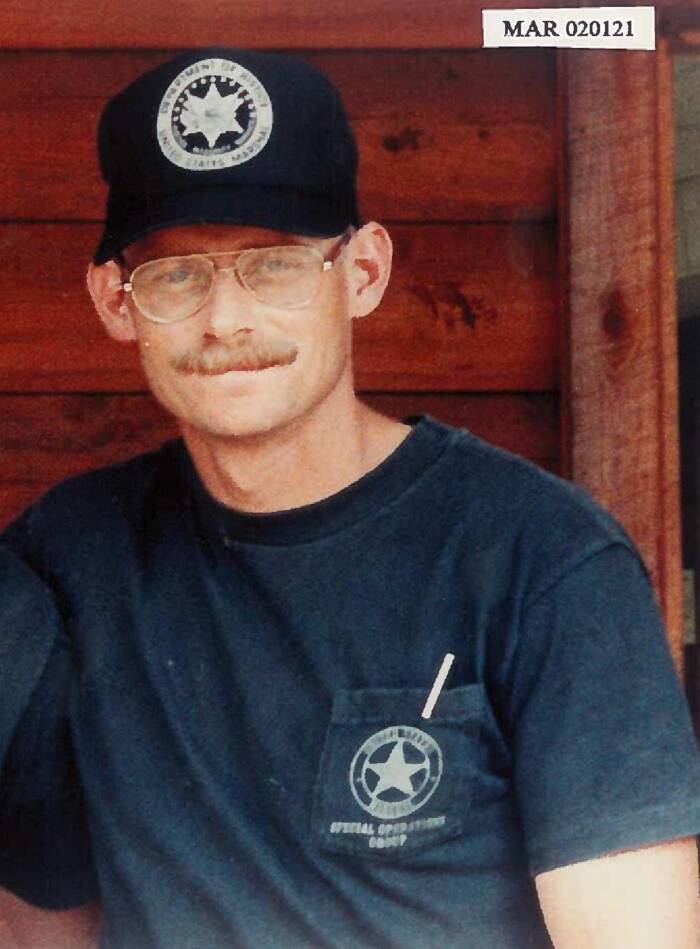
Dave HuntWilliam Degan, the U.S. Marshal who was killed on the first day of the Ruby Ridge incident.
Two of the dogs were chained up and thus couldn’t chase the Marshals. But the third, a yellow Lab named Striker, gave chase. He was followed into the woods by 14-year-old Sammy Weaver, Kevin Harris, and Randy Weaver.
Randy later claimed that he’d hoped the dog was reacting to deer since their food supplies were running low. But at a spot in the woods called the “Y,” Randy came upon the three U.S. Marshals instead. One of them reportedly shouted, “Freeze, Randy,” to which Randy responded with an expletive and shouted at Sammy to go home. Sammy responded, “I’m coming, Dad.”
But instead, Sammy, Harris, and Striker had all come upon the Marshals.
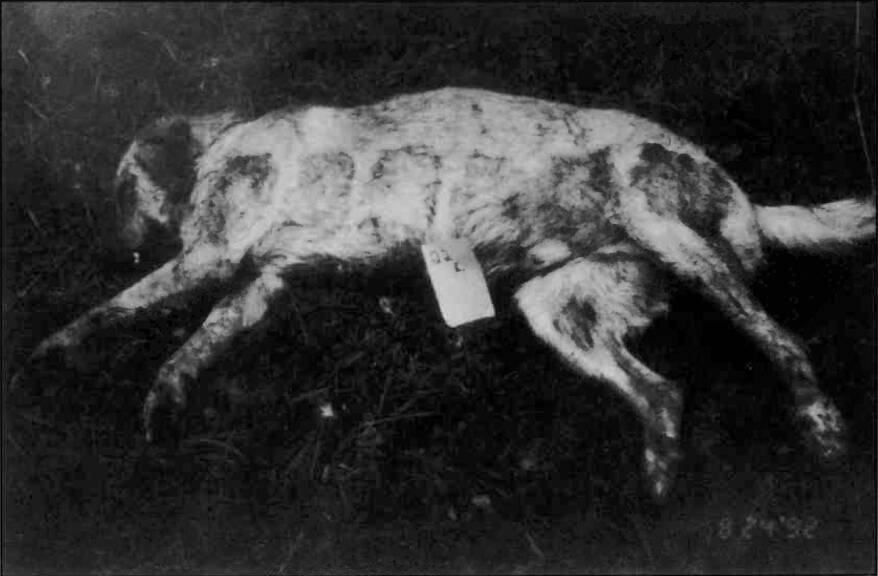
Public DomainStriker was the first casualty of the Ruby Ridge standoff.
The government would later claim that Harris fired first, murdering Degan. But jurors at Harris and Randy Weaver’s trial eventually concluded that U.S. Marshal Roderick had fired the first shot, which killed Striker. Sammy then reportedly shouted, “You shot Striker, you son of a bitch!”
In the chaos that followed, both Sammy Weaver and Kevin Harris opened fire on the agents. The gunfight led to the deaths of Sammy and Deputy U.S. Marshal William F. Degan. The Ruby Ridge incident had begun.
How The Infamous Standoff Came To An End
The day after Sammy and Degan died, the siege at Ruby Ridge began in earnest. Believing that they were about to enter a firefight with a powerful anti-government group, the FBI sent in a hostage rescue team of dozens of snipers and assault commandos. The valley near Ruby Ridge began to look like a military encampment as hundreds of federal agents and state police officers joined an armada of tents, helicopters, and Humvees.
Meanwhile, a group of anti-government demonstrators gathered near the base of Ruby Ridge to protest the presence of the authorities.

Public DomainProtestors gathered in support of the Weaver family during the standoff at Ruby Ridge.
The Weaver family didn’t know about the growing storm at the base of their mountain. They had recovered Sammy from the woods — around the same time that federal agents had recovered Degan’s body — and were mourning their loss. Then, as FBI snipers took their place up the mountain with orders to shoot any armed adults on sight, Randy Weaver came out of the cabin.
According to PBS, Randy wanted to see Sammy, who the family had placed in a shed nearby. Harris and Sara walked near him, but as they approached the shed, a gunshot suddenly cracked out of the woods. Randy dropped into a crouch — he’d been shot and he was wounded.
As the three of them ran back toward the cabin, Vicki came to the door holding baby Elisheba. Once she realized what had happened, Vicki started screaming for them to get back to the house. As Harris, Sara, and Randy hurried back inside the home, another gunshot sounded — and this time, it was Vicki who was hit, while holding her 10-month-old baby.
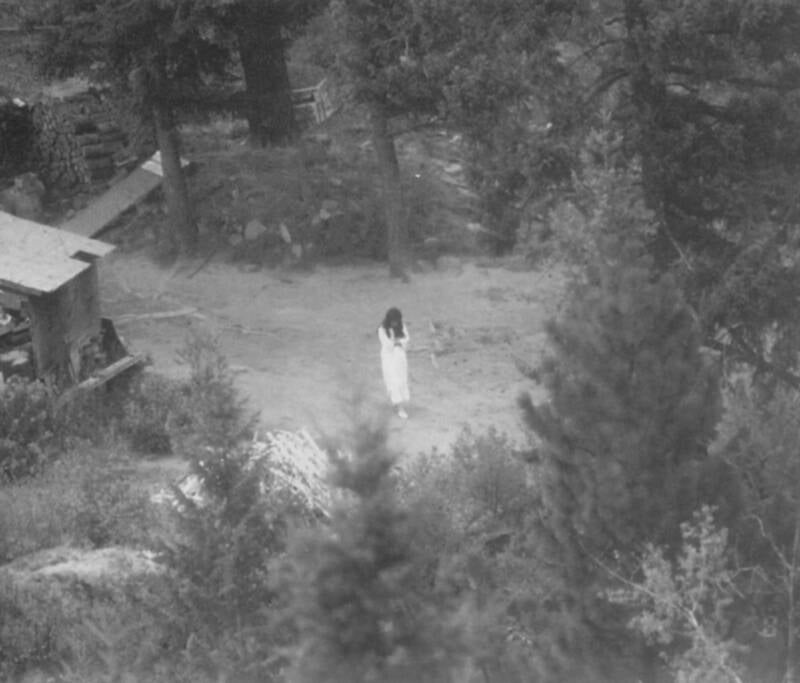
Public DomainVicki Weaver captured on government surveillance footage during the Ruby Ridge incident, shortly before her death.
Vicki Weaver was dead, and now both Randy Weaver and Kevin Harris were wounded. The nation watched as the Ruby Ridge standoff endured for nine more days, finally coming to an end when Harris and Weaver surrendered.
The Dark Legacy Of The Ruby Ridge Standoff
In the aftermath of the Ruby Ridge incident, Randy Weaver and Kevin Harris were put on trial for the death of Deputy U.S. Marshal William F. Degan. They were ultimately acquitted of murdering him. And after the Weaver family filed wrongful death claims, the government agreed to pay them $3.1 million.
By then, the Ruby Ridge standoff had been largely overshadowed by the bloodier Waco siege, during which federal agents stormed a religious compound that belonged to the Branch Davidians in Waco, Texas, ultimately killing 76 people, including 25 children. Chillingly enough, both incidents would be used by domestic terrorist Timothy McVeigh as justification for bombing a federal building in Oklahoma City on April 19, 1995.
Since then, both the Ruby Ridge incident and the Waco siege have been blamed for sparking a rise of anti-government extremists across the U.S.
Despite this, government officials have admitted to wrongdoing during the Ruby Ridge standoff. One Justice Department official acknowledged that Randy Weaver “wasn’t bothering anyone” and then-FBI Director Louis J. Freeh admitted in his congressional testimony that Ruby Ridge was “a series of terribly flawed law enforcement operations with tragic consequences.”
But for Randy Weaver, who lost his son and wife in the Ruby Ridge incident, the truth of the matter is much more shattering.
“It should never have happened,” he tearfully stated in the aftermath.
After reading about the Ruby Ridge incident, discover the story of Branch Davidian leader David Koresh. Or learn the shadowy story of Operation Northwoods, the U.S. military plot to incite a war with Cuba.





